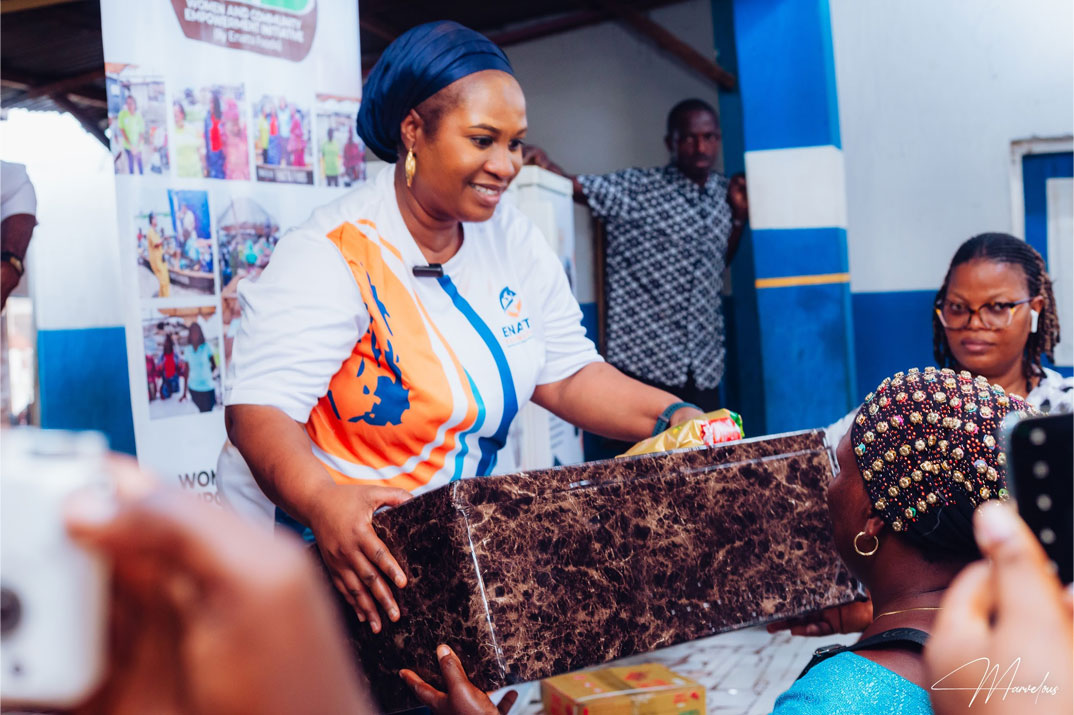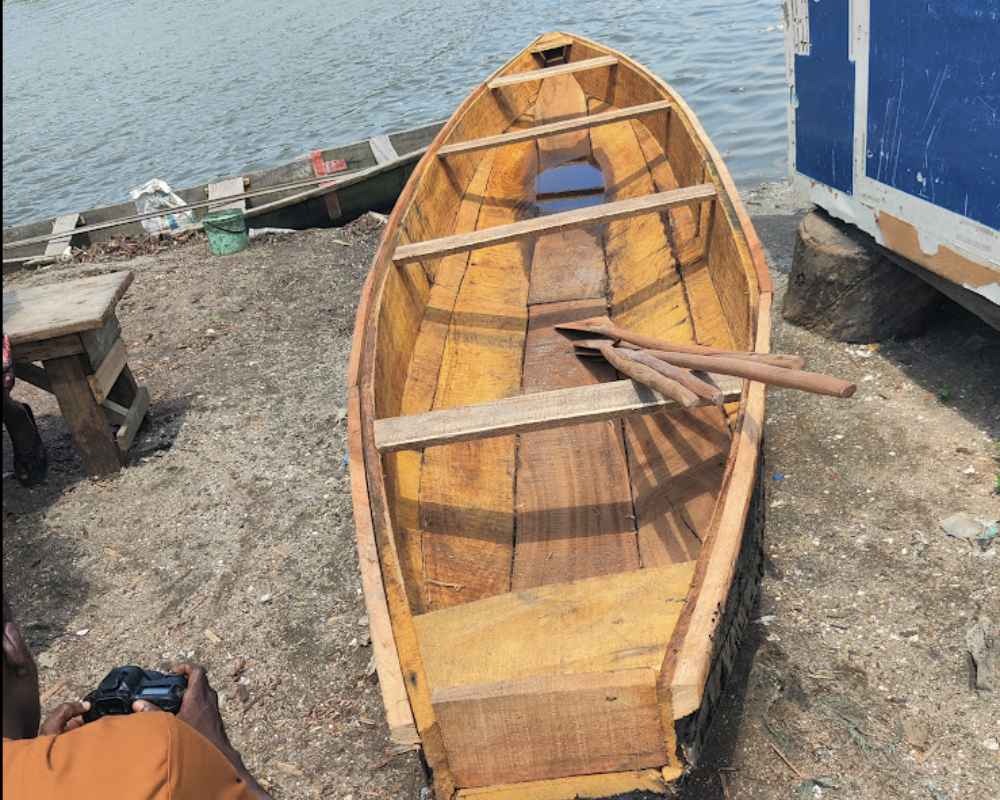How Enatta Foundation’s Shared Ice Bank Model Empowers Fisherwomen in Lagos
At Enatta Foundation, our mission is rooted in the question that guides every step we take: How do we create lasting change with the resources available? This isn’t just a rhetorical exercise—it’s a commitment to rethinking how social interventions can deliver meaningful, enduring impact.
We’ve learned that handing out aid without context or follow-through often leads to fleeting results. Instead, we focus on digging deep into the challenges communities face, collaborating with them to craft solutions, and designing systems that stand the test of time. Nowhere is this philosophy more evident than in our work with fisherwomen in Lagos’ coastal communities, where we’ve introduced the Shared Ice Bank Model to combat the devastating effects of post-harvest losses. This initiative isn’t just about equipment—it’s about empowerment, ingenuity, and building a foundation for economic resilience.

From Discovery to Action:
Understanding the Real Problem
The road to meaningful change begins with understanding, not assuming. Far too many well-intentioned programs stumble because they impose solutions without truly grasping the problem. When we first set foot in the bustling fishing hubs of Bariga and Oworonshoki in Lagos, we didn’t arrive with a blueprint in hand. Instead, we came with open ears and a willingness to learn. Our team spent weeks immersed in these communities—sitting with the fisherwomen, watching their daily routines, and listening to their stories of struggle and resilience. What emerged from these interactions was a clearer picture of the real challenge they faced.
The issue wasn’t simply a lack of cold storage, though that was part of it. The deeper problem was the time crunch these women were trapped in. Without a way to preserve their catch, they were forced to sell their fish immediately after returning from the water—often at the mercy of buyers who knew they had no leverage. These buyers would offer prices far below market value, exploiting the women’s lack of options. Day after day, this cycle repeated: hours spent fishing, only to see their hard work undercut by spoilage or unfair deals. The financial toll was crushing, leaving many unable to save, invest in their families, or break free from a hand-to-mouth existence. For us, this wasn’t just a logistics problem—it was a barrier to their dignity and economic independence. That realization became the spark for everything that followed.
Co-Designing a Scalable Solution
With the problem laid bare, our next step was to design a solution—but not in isolation. At Enatta Foundation, we believe the people closest to a challenge are best equipped to help solve it. So, we turned to the fisherwomen themselves, inviting them into the process as partners, not just beneficiaries. Together, we explored what would work in their context, weighing practical realities against their needs and aspirations. The obvious answer might have been to hand out freezers to every woman. After all, cold storage was the missing piece, right? But as we dug deeper, the limitations of that approach became clear.

Individual freezers sounded appealing on paper, but they came with a host of challenges. First, there was the cost—not just the upfront price of the equipment, but the ongoing expense of electricity in a region where power bills can strain even modest incomes. Second, scalability was a hurdle. With limited funding, we couldn’t possibly provide a freezer to every fisherwoman in the community, which risked creating haves and have-nots—a recipe for tension rather than unity. Finally, there was the question of maintenance. Freezers break down, parts wear out, and repairs require money and expertise that might not always be available. If a freezer failed, the woman relying on it would be back to square one, and our intervention would collapse under its own weight.
So, we pivoted. Drawing on the women’s input and our team’s research, we landed on a different idea: a shared system that could stretch our resources further and benefit more people. The result was the Shared Ice Bank Model—a practical, community-driven solution that sidestepped the pitfalls of individual ownership while delivering the preservation power these women needed. It wasn’t about giving everyone a freezer; it was about creating a collective resource they could all tap into, sustainably and equitably.
The Shared Ice Bank Model: How It Works
The Shared Ice Bank Model is as elegant as it is effective, turning a handful of freezers into a lifeline for an entire community. At its core, the system shifts the focus from storing fish directly to producing a resource that every fisherwoman can use: ice. Here’s how it unfolds in practice. We install a small number of freezers in a central location, operated and maintained as a communal asset. These freezers don’t hold fish—they churn out ice blocks, day after day. The women then collect these ice blocks and pair them with polystyrene boxes—lightweight, affordable containers with excellent insulation properties. Inside these boxes, the ice keeps their fish fresh for far longer than they could manage before.
The process is straightforward but transformative. Each morning or at any time of the day, fisherwomen head to the ice bank to pick up their blocks, loading them into their polystyrene boxes alongside their catch. The ice slows spoilage, giving them the flexibility to store fish for days instead of hours. Meanwhile, back at the ice bank, the freezers keep running, producing new blocks to replace the ones taken, every woman collecting ice blocks must come with equivalent Sachet water for restocking. This replenishing cycle is the magic of the model—it ensures a steady, reliable supply without waste or shortages. No one gets left behind, because the system isn’t tied to individual ownership; it’s built for collective access.
The benefits ripple out in ways both practical and profound. First, it’s inclusive—every woman in the community can use it, regardless of whether she could afford her own freezer. Second, it’s sustainable. By centralizing the freezers, we cut down on energy costs and simplify maintenance, making the system easier to keep running over the long haul. Third, it’s efficient. The ice blocks stretch the impact of each freezer far beyond what a single unit could achieve on its own. What started as a modest investment in equipment has become a scalable tool for economic empowerment, proving that ingenuity can turn scarcity into abundance.
Empowering Communities Through Ownership
A solution can be brilliant on paper, but if it doesn’t take root in the community, it’s doomed to fail. That’s why we don’t just drop off equipment and walk away. At Enatta Foundation, we’re obsessed with integration—ensuring that the people we serve don’t just use our interventions, but own them. For the Shared Ice Bank Model, that meant going beyond installation to build capacity and confidence among the fisherwomen.
We rolled out a comprehensive training program, tailored to their needs and schedules. In hands-on sessions, they learned how to operate the freezers—how to monitor temperatures, troubleshoot minor issues, and maximize ice production. We walked them through the art of packing fish into polystyrene boxes, showing them how to layer ice for optimal preservation. And through role-playing exercises, they practiced managing the replenishment system, taking turns simulating the process of collecting ice and restocking the supply. These weren’t lectures—they were collaborative workshops, filled with questions, laughter, and a growing sense of mastery.

The goal was simple but ambitious: to transform the fisherwomen from passive recipients into active stewards. Today, they’re the ones keeping the ice bank humming—checking the freezers, organizing distribution, and ensuring no one is left out. This ownership isn’t just practical; it’s psychological. It’s the difference between relying on charity and building something they control. And because they’re invested in its success, the system has a far better shot at lasting for years, not just months.
A Future of Economic Stability
The Shared Ice Bank Model is more than a technical fix—it’s a game-changer for the women of Bariga and Oworonshoki. Before, their days were a race against spoilage, with every unsold fish representing lost income. Now, they have breathing room. With fish staying fresh for days, they can wait for the right buyers, negotiate better prices, and even store surplus for peak market days. The middlemen who once dictated terms are losing their grip, because these women are no longer desperate to sell.
The numbers tell part of the story: higher earnings, more consistent income, and a chance to save for the future. But the real impact is in the intangibles—the pride in their eyes, the confidence in their voices, the knowledge that they’re not just surviving, but building something better for their families. For many, it’s the first time they’ve felt in control of their economic destiny. And as word spreads, other communities are starting to take notice, asking how they can bring the ice bank model to their shores.
At Enatta Foundation, we’re driven by a belief that true impact isn’t about how much you have—it’s about how smartly you use it. The Shared Ice Bank Model embodies that ethos. It’s not just a story of freezers or ice blocks; it’s a testament to what’s possible when discovery meets collaboration, and when limited resources are met with unlimited creativity. By empowering fisherwomen to take charge of their livelihoods, we’re not just addressing a problem—we’re rewriting the rules of what economic stability can look like.
Innovation Without Limits
is a non-profit organization birthed from the initiatives of Enatta Foods Ltd, a food production and export company in Lagos state committed to trends in agriculture export business and educating people about opportunities within the sector.
Our Process
- Choose your favourite cause
- Register to our website
- Donate the amount you like
- Stay tuned about cause

Leave a Reply